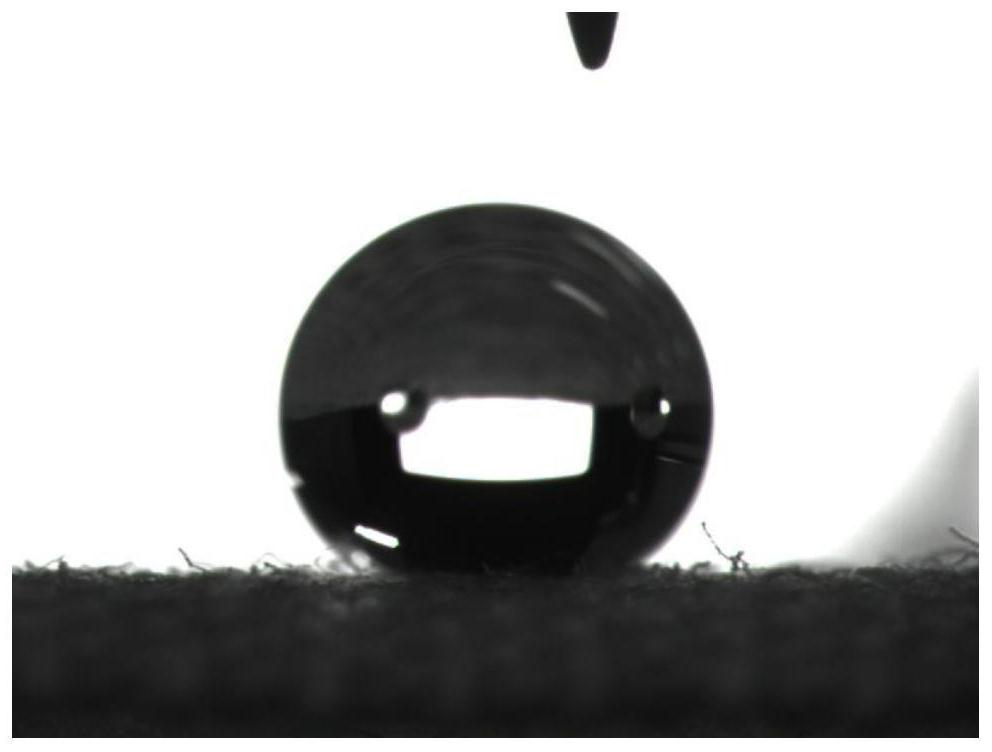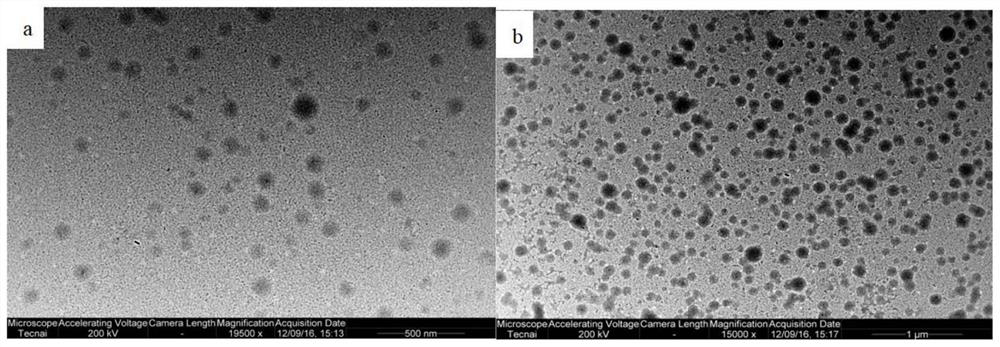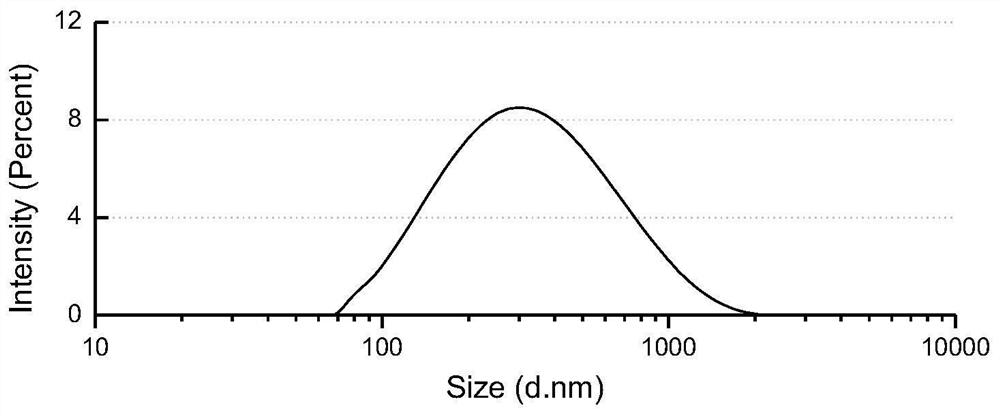Preparation method and application of nano silicon dioxide modified soap-free fluorine-free cationic polyacrylate waterproof agent
A technology of nano-silica and polyacrylate, which is applied in the field of textile printing and dyeing, can solve the problems of reduced water resistance of fabrics, easy aggregation of nanoparticles, and poor stability, so as to improve dispersibility and stability, and promote the control of polymer particles. Diameter, the effect of improving durability
- Summary
- Abstract
- Description
- Claims
- Application Information
AI Technical Summary
Problems solved by technology
Method used
Image
Examples
Embodiment 1
[0032] Take 16g behenyl methacrylate, 0.4g methyl methacrylate, 0.6g n-butyl acrylate, 0.5g methacryloyloxyethyl dimethyl octadecyl ammonium chloride, 0.4g methacrylic acid Glycidyl ester, 2.1 g of 1-allyloxy-3-(4-nonylphenol)-2-propanol polyoxyethylene (10) ether, 80 g of water. Add the mixed monomer, emulsifier, and deionized water into the beaker, stir and dissolve at 40°C, and then stir at high speed under ultrasonic waves to form a monomer pre-emulsion with blue light. Take 0.08g of azobisisobutyronitrile to prepare an aqueous solution. Add 1 / 3 part of the monomer pre-emulsion to a reactor equipped with a stirrer, a thermometer and a feeding device, and pass nitrogen gas for 30 minutes, add 1 / 3 part of azobisisobutyronitrile aqueous solution, and raise the temperature to the required 80°C, After reacting for 20 minutes, add the remaining 2 / 3 parts of the monomer pre-emulsion and initiator aqueous solution dropwise within 40 minutes; 50°C, then add 0.4g tetraethyl orthos...
Embodiment 2
[0041] Get 20g octadecyl methacrylate, 1.4g isobornyl methacrylate, 1.8g methyl acrylate, 3.8g methacryloyloxyethyl dimethyl behenyl ammonium chloride, 1.2g formazan Hydroxyethyl acrylate, 1.5g polyethylene glycol monoallyl ether, 70.3g water. Add the mixed monomer, emulsifier, and deionized water into the beaker, stir and dissolve at 50°C, and then stir at high speed under ultrasonic waves to form a monomer pre-emulsion with blue light. Take 0.25g of ammonium persulfate to prepare an aqueous solution. Add 1 / 3 part of the monomer pre-emulsion to the reaction kettle equipped with a stirrer, a thermometer and a feeding device, pass nitrogen for 30 minutes, add 1 / 3 part of ammonium persulfate aqueous solution, and raise the temperature to the required 85 ° C, react for 30 minutes, Add the remaining 2 / 3 parts of the monomer pre-emulsion and the initiator aqueous solution dropwise within 60 minutes; Add 1.26 g of tetraethyl orthosilicate to react for 12 hours, lower the temperatu...
Embodiment 3
[0043] Take 22.95g of octadecyl acrylate, 6.5g of n-butyl methacrylate, 2.5g of ethyl acrylate, 1.8g of acryloyloxyethyldiethylhexadecyl ammonium chloride, 1.25g of 3-chloro- 2-Hydroxypropyl acrylate, 3.3 g nonylphenol polyoxyethylene (4) ether acrylate, 61.7 g water. Add the mixed monomer, emulsifier, and deionized water into the beaker, stir and dissolve at 55°C, and then stir at high speed under ultrasonic waves to form a monomer pre-emulsion with blue light. Take 0.36g of azobisisobutimidine hydrochloride to prepare an aqueous solution. Add 1 / 3 part of monomer pre-emulsion to a reactor equipped with a stirrer, a thermometer and a feeder, and feed nitrogen for 30 minutes, add 1 / 3 part of azobisisobutyrosulfide hydrochloride aqueous solution, and heat up to the It needs to react at 90°C for 40 minutes, and then add the remaining 2 / 3 parts of monomer pre-emulsion and initiator aqueous solution dropwise within 120 minutes; base silane, reacted at 90°C for 120min, then lowere...
PUM
| Property | Measurement | Unit |
|---|---|---|
| particle size | aaaaa | aaaaa |
Abstract
Description
Claims
Application Information
 Login to View More
Login to View More - R&D
- Intellectual Property
- Life Sciences
- Materials
- Tech Scout
- Unparalleled Data Quality
- Higher Quality Content
- 60% Fewer Hallucinations
Browse by: Latest US Patents, China's latest patents, Technical Efficacy Thesaurus, Application Domain, Technology Topic, Popular Technical Reports.
© 2025 PatSnap. All rights reserved.Legal|Privacy policy|Modern Slavery Act Transparency Statement|Sitemap|About US| Contact US: help@patsnap.com



